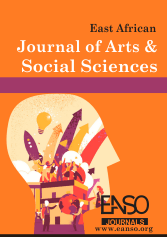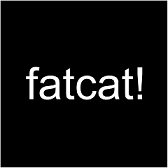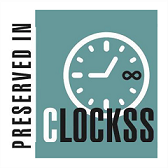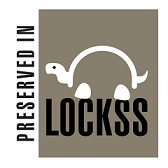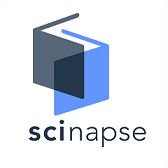The Use of WhatsApp Comments as a Means of Responding to Government Directives on COVID-19: Evidence from Kenya
Abstract
This paper examines how Kenyans in WhatsApp groups used the platform as a means of responding to government directives on COVID-19. During the COVID-19 pandemic, a lot of information about the pandemic and how it was managed was exchanged on the WhatsApp platform in Kenya. The study from which this paper stems set out to investigate the way in which WhatsApp comments were used to convey public perceptions on the COVID-19 government directives in the country. The study used five WhatsApp groups comprising medics, former university classmates, neighbours, investment partners, and a group of workmates. The Critical Discourse Analysis theory, and specifically the ideas of Norman Fairclough, and the Appraisal Framework were used as theoretical frameworks. The study employed the qualitative research approach, which allowed an in-depth analysis of WhatsApp texts that had been sampled purposively. Data was obtained from WhatsApp archives over a period of 12 months to capture various phases of the pandemic. The data were coded thematically in accordance with the research objective and then subjected to content analysis, which was augmented with a critical discourse analysis to determine how the COVID-19 directives were framed in the selected groups. The study found that WhatsApp comments not only disseminated government directives but were also used as a form of agency to discredit government directives. Through irony, sarcasm and religious rhetoric, some WhatsApp writers reinterpreted, resisted or rejected government directives. The findings add to scholarly literature on new media discourse in general, Kenyan new media discourse in particular, and on WhatsApp discourse, an increasingly common but little-studied platform in discourse analysis
Downloads
References
Adesina, O. (2021). Faith and fear in digital spaces: Religious discourse and the COVID-19 pandemic in Africa. Journal of African Media Studies, 13(2), 265– 282. https://doi.org/10.1386/jams_00042_1
Asmara, R. (2020). Teaching English in a Virtual Classroom Using WhatsApp during COVID-19 Pandemic. Language and Education Journal, 5, 16-27. https://doi.org/10.52237/lej.v5i1.152
Banda, F. (2022). Religion, resistance, and rhetoric: Social media discourses on COVID-19 in sub-Saharan Africa. Discourse & Society, 33(4), 482– 500. https://doi.org/10.1177/09579265221086321
Blommaert, J. (2005). Discourse: A critical introduction. Cambridge University Press.
Cheshire, J. (1982). Linguistic variation and social function. In S. Romaine (Ed.), Sociolinguistic variation in speech communities (pp. 153-166). London: Edward Arnold.
Chiluwa, I. (2019). Online activism in Mali: A study of digital discourses of the Movement for the Liberation of Azawad.
Chiluwa, I. (2020). Digital activism and the discursive construction of citizenship in Africa. Pragmatics and Society, 11(3), 369–388.
Costa, E., Esteve-Del-Valle, M., & Hagedoorn, B. (2022). Scalable Co-presence: WhatsApp and the Mediation of Personal Relationships during the COVID-19 Lockdown. Social Media + Society, 8(1). https://doi.org/10.1177/20563051211069053
Crystal, Davis. (2020). Cambridge Reflections-COVID-19: Vocabulary. Cambridgeblog. URL: http://www.cambridgeblog.org/2020/05/covocabulary/
Evolvi, G. (2017). #Islamexit: inter-group antagonism on Twitter. Information, Communication & Society. 22. 1- 16. 10.1080/1369118X.2017.1388427.
Fairclough, N. (1992). Discourse and social change. Polity Press.
Fairclough, N. (1995). Media discourse. Edward Arnold.
Fairclough, N. (2001). Language and power. (2nd. Ed). London: Pearson Education Limited. Foucault, M. (1980). Power/knowledge: Selected interviews and other writings. Pantheon
Halliday, M.A.K., Matthiessen, C.M.I.M., Halliday, M., & Matthiessen, C. (2004). An Introduction to Functional Grammar (3rd ed.). Routledge. https://doi.org/10.4324/9780203783771
Kamalu, I. (2016). The “Eboliticization” of Discourse: Online Legitimations on the Outbreak of Ebola Virus Disease (EVD) in West Africa http://dx.doi.org/10.4314/afrrev.v10i3.10
Kelly, G. J. (2014). Handbook of Research on Science Education, Volume II, Discourse Practices in Science Learning and Teaching (1st ed., pp. 1- 16) Routledge https://doi.org/10.4324/9780203097267
Kitetu, C. (2019). Discourse Analysis Methods, Theory and Practice. Eldoret: Utafiti Foundation.
Milroy, J. & Milroy, L. (1985). Linguistic change, social network and speaker innovation. Journal of Linguistics 21(2) 339-384. Cambridge: Cambridge University Press.
Mulonzi, B. & Ngumo, Mugambi & Omoke, Lilian. (2024). Themes Used to Discursively Construct the COVID-19 Pandemic in Kenya's Newspaper Headlines. SSRN Electronic Journal. 10.2139/ssrn.4898524.
Pascual, M. & Unger, L. (2010). Appraisal in the research genres: An analysis of grant proposals by Argentinean researchers. Rev. signos [online]. 2010, vol.43, n.73, pp.261-280. ISSN 0718- 0934. http://dx.doi.org/10.4067/S0718-09342010000200004.
Seufert, A., Poignée, F., Hoßfeld, T. (2022). Pandemic in the digital age: analyzing WhatsApp communication behavior before, during, and after the COVID-19 lockdown. Humanit Soc Sci Commun 9, 140 (2022). https://doi.org/10.1057/s41599-022-01161-0
Silberstein, S. (2002). War of Words: Language, Politics and 9/11 (1st ed.). Routledge. https://doi.org/10.4324/9780203341421
Thorne, Tony. (2020). #CORONASPEAK - the language of Covid-19 goes viral - 2. Language and Innovation. URL: https://language-and-innovation.com/2020/04/15/coronaspeak-part-2-the-language-of-covid-19-goes-viral/
Van Dijk, T. A. (2006). Discourse and manipulation. Discourse & Society, 17(3), 359–383.
Wodak, R., & Meyer, M. (Eds.). (2016). Methods of critical discourse studies (3rd ed.). SAGE Publications.
Copyright (c) 2025 Anne Manyasi, Josephine Khaemba, PhD, Catherine Kitetu, PhD

This work is licensed under a Creative Commons Attribution 4.0 International License.

